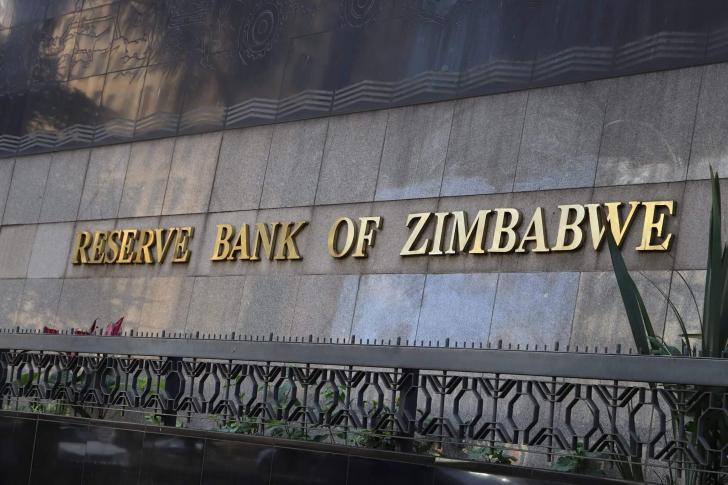News / National
Zimbabwe banking sector strengthens amid declining non-performing loans
24 Nov 2024 at 09:55hrs |
0 Views

The Reserve Bank of Zimbabwe (RBZ) has reported a significant improvement in the country's banking sector credit risk landscape, marked by a decrease in the ratio of non-performing loans (NPLs) to total loans. As of June 30, 2024, the NPL ratio stood at 2.02%, down from 2.17% recorded on March 31, 2024. This ratio remains comfortably below the global benchmark of 5%, reflecting growing stability and resilience in Zimbabwe's financial institutions.
Progress in Context
The improvement in NPLs underscores the sector's recovery from a turbulent history, where elevated NPL ratios once destabilized banks, leading to financial crises and closures. At the height of these challenges in the early 2000s, NPLs reached a staggering 20.45%, prompting the failure of institutions like Interfin Bank, Trust Bank Corporation, Royal Bank, Allied Bank, and Genesis Investment Bank.
These failures highlighted vulnerabilities in credit risk management and inadequate capital buffers, which the RBZ has since addressed through reforms, including the establishment of the Zimbabwe Asset Management Company (ZAMCO) in 2014.
ZAMCO's Impact and Conclusion of Mandate
ZAMCO was tasked with acquiring distressed loans to stabilize the banking sector, receiving US$1.2 billion from the RBZ for this purpose. ZAMCO chief executive Dr. Cosmas Kanhai recently announced that the organization had successfully cleared all NPLs ahead of its 2025 mandate.
"You would recall that when ZAMCO was formed, it was mandated to acquire NPLs in the banking sector... We managed to clear all NPLs well ahead of the stipulated 2025," Dr. Kanhai said.
Current Banking Landscape
The RBZ's latest banking sector report for the quarter ending June 30, 2024, highlights a total loan portfolio of ZiG27.45 billion. Foreign currency-denominated loans account for approximately 88.88% of this figure, emphasizing the critical role of foreign currency in driving Zimbabwe's economic activities.
The report credits robust credit risk management systems for maintaining NPL ratios within safe levels. "The reported banking sector NPL ratio was within the bank's risk appetite and internationally acceptable threshold of 5%. The banking sector continued to maintain acceptable credit risk management systems," the RBZ noted.
Supporting Economic Growth
The banking sector has been instrumental in funding productive sectors of the economy, bolstering economic growth. Equity Axis, an economic analysis firm, commended the sector's transformation:
"NPL ratios have recently stabilized within safe levels, largely due to lessons learned from past financial challenges. Zimbabwe's banking sector, having endured a turbulent history with high NPL levels, has been reshaped by these experiences — some of which led to the failure of several banks," the firm stated.
The decline in NPL ratios reflects a broader trend of financial stability and resilience, positioning Zimbabwe's banking sector as a reliable pillar for economic recovery and growth. With continued reforms and lessons from past crises, the sector appears well-prepared to manage future risks and support national economic objectives.
Progress in Context
The improvement in NPLs underscores the sector's recovery from a turbulent history, where elevated NPL ratios once destabilized banks, leading to financial crises and closures. At the height of these challenges in the early 2000s, NPLs reached a staggering 20.45%, prompting the failure of institutions like Interfin Bank, Trust Bank Corporation, Royal Bank, Allied Bank, and Genesis Investment Bank.
These failures highlighted vulnerabilities in credit risk management and inadequate capital buffers, which the RBZ has since addressed through reforms, including the establishment of the Zimbabwe Asset Management Company (ZAMCO) in 2014.
ZAMCO's Impact and Conclusion of Mandate
ZAMCO was tasked with acquiring distressed loans to stabilize the banking sector, receiving US$1.2 billion from the RBZ for this purpose. ZAMCO chief executive Dr. Cosmas Kanhai recently announced that the organization had successfully cleared all NPLs ahead of its 2025 mandate.
"You would recall that when ZAMCO was formed, it was mandated to acquire NPLs in the banking sector... We managed to clear all NPLs well ahead of the stipulated 2025," Dr. Kanhai said.
Current Banking Landscape
The RBZ's latest banking sector report for the quarter ending June 30, 2024, highlights a total loan portfolio of ZiG27.45 billion. Foreign currency-denominated loans account for approximately 88.88% of this figure, emphasizing the critical role of foreign currency in driving Zimbabwe's economic activities.
The report credits robust credit risk management systems for maintaining NPL ratios within safe levels. "The reported banking sector NPL ratio was within the bank's risk appetite and internationally acceptable threshold of 5%. The banking sector continued to maintain acceptable credit risk management systems," the RBZ noted.
Supporting Economic Growth
The banking sector has been instrumental in funding productive sectors of the economy, bolstering economic growth. Equity Axis, an economic analysis firm, commended the sector's transformation:
"NPL ratios have recently stabilized within safe levels, largely due to lessons learned from past financial challenges. Zimbabwe's banking sector, having endured a turbulent history with high NPL levels, has been reshaped by these experiences — some of which led to the failure of several banks," the firm stated.
The decline in NPL ratios reflects a broader trend of financial stability and resilience, positioning Zimbabwe's banking sector as a reliable pillar for economic recovery and growth. With continued reforms and lessons from past crises, the sector appears well-prepared to manage future risks and support national economic objectives.
Source - Sunday Mail
Join the discussion
Loading comments…













